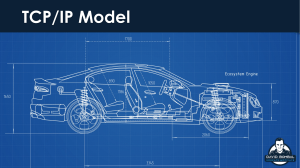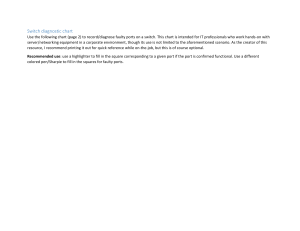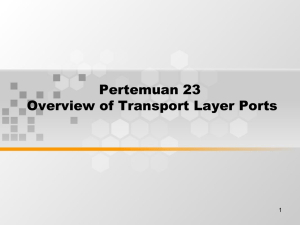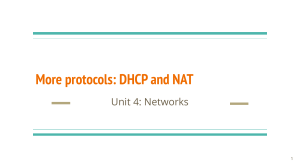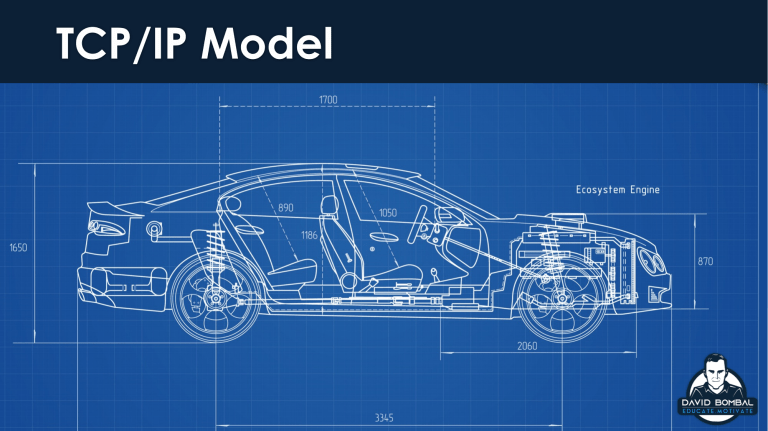
TCP/IP Model OSI Model Debates and arguments • Don’t argue. Just learn the TCP/IP model (and a bit of the OSI model) for the exam. https://twitter.com/ErrataRob/status/1166451306183254016 Different models in literature Source: https://en.wikipedia.org/wiki/Internet_protocol_suite OSI vs TCP/IP Model * Source: Wikipedia Why use a model? Why use a model? Why use a model? • A mental model captures ideas in a problem domain, while a conceptual model represents 'concepts' (entities) and relationships between them. • A conceptual model is a representation of a system, made of the composition of concepts which are used to help people know, understand, or simulate a subject the model represents. • It is also a set of concepts. Some models are physical objects; for example, a toy model which may be assembled, and may be made to work like the object it represents. • The term conceptual model may be used to refer to models which are formed after a conceptualization or generalization process. • Conceptual models are often abstractions of things in the real world whether physical or social. * Source: Wikipedia Why use a model? • The aim of a conceptual model is to express the meaning of terms and concepts used by domain experts to discuss the problem, and to find the correct relationships between different concepts. • The conceptual model attempts to clarify the meaning of various, usually ambiguous terms, and ensure that problems with different interpretations of the terms and concepts cannot occur. • Such differing interpretations could easily cause confusion amongst stakeholders, especially those responsible for designing and implementing a solution, where the conceptual model provides a key artifact of business understanding and clarity. * Source: Wikipedia TCP/IP Model • The Internet protocol suite is the conceptual model and set of communications protocols used in the Internet and similar computer networks. • It is commonly known as TCP/IP because the foundational protocols in the suite are the Transmission Control Protocol (TCP) and the Internet Protocol (IP). • During its development, versions of it were known as the Department of Defense (DoD) model because the development of the networking method was funded by the United States Department of Defense through DARPA. Its implementation is a protocol stack. * Source: Wikipedia What is a protocol • In telecommunication, a communication protocol is a system of rules that allow two or more entities of a communications system to transmit information via any kind of variation of a physical quantity. • The protocol defines the rules, syntax, semantics and synchronization of communication and possible error recovery methods. • Protocols may be implemented by hardware, software, or a combination of both. * Source: Wikipedia Devices & protocols Port numbers • In computer networking, a port is a communication endpoint. • At the software level, within an operating system, a port is a logical construct that identifies a specific process or a type of network service. • A port number is a 16-bit unsigned integer, thus ranging from 0 to 65535. * Source: Wikipedia IANA port numbers • Service names and port numbers are used to distinguish between different services that run over transport protocols such as TCP and UDP. • Service names are assigned on a first-come, first-served process, as documented in [RFC6335]. • Port numbers are assigned in various ways, based on three ranges: • System Ports (0-1023) • User Ports (1024-49151) • and the Dynamic and/or Private Ports (49152-65535) * Source: iana.org Ephemeral ports • An ephemeral port is a short-lived transport protocol port for Internet Protocol (IP) communications. • Ephemeral ports are allocated automatically from a predefined range by the IP stack software. • An ephemeral port is typically used by the Transmission Control Protocol (TCP), User Datagram Protocol (UDP), as the port assignment for the client end of a client–server communication to a particular port (usually a well-known port) on a server. * Source: Wikipedia Ephemeral ports • The Internet Assigned Numbers Authority (IANA) suggests the range 49152 to 65535 for dynamic or private ports. • Many Linux kernels use the port range 32768 to 61000. FreeBSD has used the IANA port range since release 4.6. Previous versions, including the Berkeley Software Distribution (BSD), use ports 1024 to 5000 as ephemeral ports.[ • Microsoft Windows operating systems through XP use the range 1025–5000 as ephemeral ports by default. • Windows Vista, Windows 7, and Server 2008 use the IANA range by default. • All versions of Windows since Windows 2000 have the option of specifying a custom range anywhere within 1025–65535. * Source: Wikipedia Good URLS • Port numbers: • https://www.iana.org/assignments/servicenames-port-numbers/service-names-portnumbers.xhtml • Protocol numbers: • https://www.iana.org/assignments/protocol -numbers/protocol-numbers.xhtml TCP/IP Model
